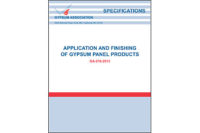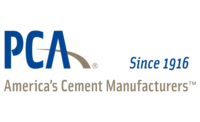Human Augmentation in the Construction Industry
Protecting employees’ health and safety and helping companies’ bottom line.

There’s a common theme in conversations being had in the construction industry today: the shortage of skilled labor and the aging workforce. It’s one of the biggest concerns in the industry.
Every labor hour counts on a job site—even more so with a labor shortage in play. Finding ways to optimize each labor hour to get the most performance and value, all while protecting the health and safety of an aging workforce, can be challenging.
Working faster, more safely and comfortably becomes more and more important given these circumstances. Thanks to the shift in the construction industry to focus on ergonomic solutions and human augmentation, this is now becoming possible.
Human Augmentation
The term “human augmentation” commonly refers to technology that is integrated with a user’s body to help enhance his or her productivity or capability and prevent personal injuries.1

Broad View of Human Augmentation
Not everyone is comfortable with the idea of human augmentation. For example, 39 percent of people think human augmentation will be dangerous for society.2
However, many see the positive ways in which human augmentation can improve lives. Sixty-three percent would consider augmenting their bodies with technology to improve them—either permanently or temporarily.2 That’s particularly true for industries such as construction, where human augmentation can help make working on job sites safer, address labor shortages and enhance productivity.
Construction Industry Outlook on Human Augmentation
With the global market for human augmentation projected to reach $22.4 billion by the year 20273, many players in multiple industries will begin driving the development of human augmentation for their applications.
There is growing momentum behind human augmentation in the construction industry and as a result, construction technology is getting safer. While these innovations will never replace highly skilled construction workers, the technology can help support them—making working on job sites safer, addressing skilled labor shortages and enhancing productivity.
One way the industry is implementing human augmentation is through exoskeletons—wearable systems that provide physical assistance to its users through assistive torques and/or structural support. The system is worn on the body and follows the user’s movements, with no or very limited modifications of the workplace required.

Addressing Productivity and Increased Demand
Musculoskeletal injuries caused by overhead construction work have a profound effect on the construction industry’s businesses and employees. Companies lose productivity due to musculoskeletal injuries and an employee’s well-being is at a risk if they suffer any kind of injury.
Exoskeletons are designed to enhance productivity by reducing stress on the body, causing less pain and fatigue due to a reduced load on muscles and joints. This reduced stress and increased comfort when working, enables users to improve their health and reduce the number of sick days they take—if they still take the required rest breaks for physical and mental well-being.
Tests have proven the effectiveness of the exoskeleton in terms of reducing stress on a worker’s muscles and joints, improving the health of a worker and minimizing days lost through poor health.
By being able to retain skilled workers for longer periods due to fewer employee sick days, construction companies can utilize exoskeletons to improve operations twofold by improving employee well-being and increasing on-site productivity.

8.9 million working days were lost due to work-related musculoskeletal injuries in 2019/2020.4
Conclusive Thoughts
Human augmentation technology has the ability to enhance the lives (and work) of people around the globe. Today’s construction companies must be aware of the issues caused by musculoskeletal injuries—from health and safety issues that affect employee well-being—to productivity issues.
The time to act against musculoskeletal injuries and support construction workers is now.
Credits
- What is Human Augmentation? https://www.freshconsulting.com/insights/blog/what-is-human-augmentation
- Opinium Research. (2020, September). The Future of Human Augmentation 2020. Kaspersky. https://www.kaspersky.com
- Global Human Augmentation Industry https://www.prnewswire.com/news-releases/global-human-augmentation-industry-301047387.html
- HSE, Health and Safety at Work: Summary Statistics for Great Britain, 2019. HSE, Work-related musculoskeletal disorder statistics (WRMSDs) in Great Britain, 2020
Looking for a reprint of this article?
From high-res PDFs to custom plaques, order your copy today!








